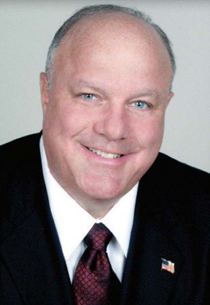5 Steps to Personal Branding Success
 Ready to take control of your professional reputation? It requires intention, dedication, and diligence to keep your message on track, and it’s a skill that CSOs need to be particularly adept at.
Ready to take control of your professional reputation? It requires intention, dedication, and diligence to keep your message on track, and it’s a skill that CSOs need to be particularly adept at.
Every year, the CSO Center Leadership Series works to unite security leaders in discussing today’s important issues and an array of traditional and modern methods to tackle them. The 2022 series focuses on the importance of executive branding, which has become essential in giving leaders and the organizations they protect an edge over the competition.
 Kicking off the 2022 CSO Center Leadership Series, Kimberly Hardcastle-Geddes, CEM, president of marketing firm MDG, and Richard Simon, president and CEO of United Service Companies, discussed how information about both individuals and organizations has not only become more accessible through the Internet and social media, but also more shareable and marketable. So, with virtually anyone able to research you, there are methods that can help in crafting the message and impression you want to leave.
Kicking off the 2022 CSO Center Leadership Series, Kimberly Hardcastle-Geddes, CEM, president of marketing firm MDG, and Richard Simon, president and CEO of United Service Companies, discussed how information about both individuals and organizations has not only become more accessible through the Internet and social media, but also more shareable and marketable. So, with virtually anyone able to research you, there are methods that can help in crafting the message and impression you want to leave.
Define Your Persona
In working to attract clients, it helps to stand out from the crowd. Highlight what makes you either memorable or specialized. “It can be tough to set yourself apart,” Hardcastle-Geddes notes, but having a personal brand can help people remember you while creating meaningful connections.
For Simon, whose name over the years has become synonymous with his company, security is essentially a service provided to clients. And as such, both Simon and United Services have strived to become known for providing excellent service.
Part of establishing that brand, Simon says, comes from picking the right people for the job. “Picking your team is a reflection on you,” he says. Simon recommends selecting individuals that can reflect and commit to similar values or work ethic—for him, that includes clear communication and industry awareness.
Beyond the marketing hype, creating, maintaining, and growing a personal brand can also enhance aspiring leaders’ professional development.
Build Your Network, Both Online and Offline
Whether it’s LinkedIn or a professional group, it’s important to check that your networks reflect your values. If a CSO seeking to build a professional, serious brand has a network of unprofessional connections who post content about extreme political views or inebriated weekend shenanigans, that can lead others to make assumptions about the CSO.
Hardcastle-Geddes notes that one’s network of people and organizations can build upon an individual persona, with the individual using their associations to demonstrate his or her brand through shared values, skills, and personality.
Choose Your Platforms
Although it may be tempting to join every group or use every platform to promote your brand, Hardcastle-Geddes recommends only sticking to the ones you would actually participate in or utilize. It’s easy to get overwhelmed by various social media or other online platforms, so it is best to focus time and energy on the ones you can nurture and invest in. How does having a Twitter account complement your brand if you don’t actually contribute to the conversation?
When it comes to offline functions, apply the same standard of being more selective of which conferences to participate in as well as where you’re spending time volunteering.
Share Your Knowledge
Online and offline platforms can be used to demonstrate a leader’s expertise, which can help a brand stand out as knowledgeable.
But not every post has to be a white paper. As long as a leader is providing value, sharing knowledge can be as easy as reposting on social media—as long as one adds insight in his or her commentary.
Sharing that expertise can also be done internally. For security professionals who are also leading a team, leadership also means support. One way to do that is to encourage growth, both of experience and knowledge. Simon notes that his company is currently paying for four different employees to pursue MBAs or other professional degrees or certificates. Here, he might not be sharing his knowledge to these employees directly, but he knows there is great value and return on investment for organizations with greater numbers of employees with post-graduate degrees and certifications.
Simon also recommends that leaders should be more involved in the industry he or she is protecting, which can not only enhance overall awareness of the issues and obstacles that sector will face, but it will also instill confidence in the customer’s impression of that leader.
Rinse and Repeat
So, you’ve created a brand for yourself that proves you’re knowledgeable about what it takes to protect the assets in your industry. Great! And you have a great team to support both you and your customers’ assets. Incredible! But that doesn’t mean you can kick back and relax just yet.
Maintaining a personal brand requires consistency and repetition, whether that’s checking in with members of your professional network or posting regularly to LinkedIn or a preferred online platform.
If this is something you struggle with as other crises or activities arise, Hardcastle-Geddes recommends creating reminders on your calendar to help remain consistent and develop a system that supports your brand’s direction and goals. “It’s important to ensure that your brand is evolving so you remain relevant,” Hardcastle-Geddes says.
If you missed the first session of the 2022 CSO Center Leadership Series on 3 May, members of the CSO Center can watch it on-demand here. For more information on this year’s series and the CSO Center, visit the website here.
